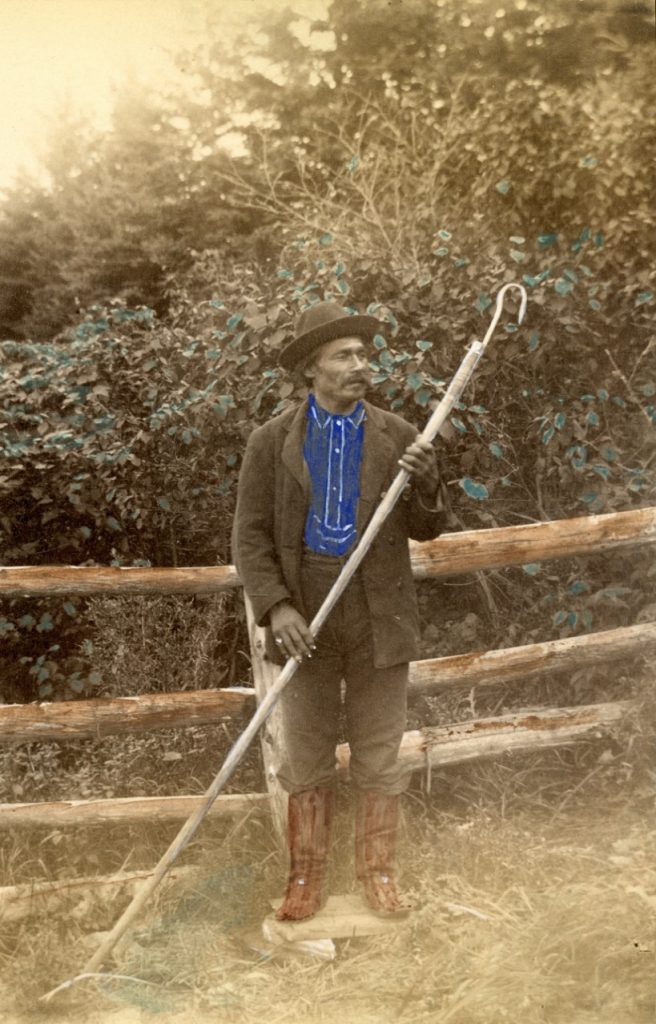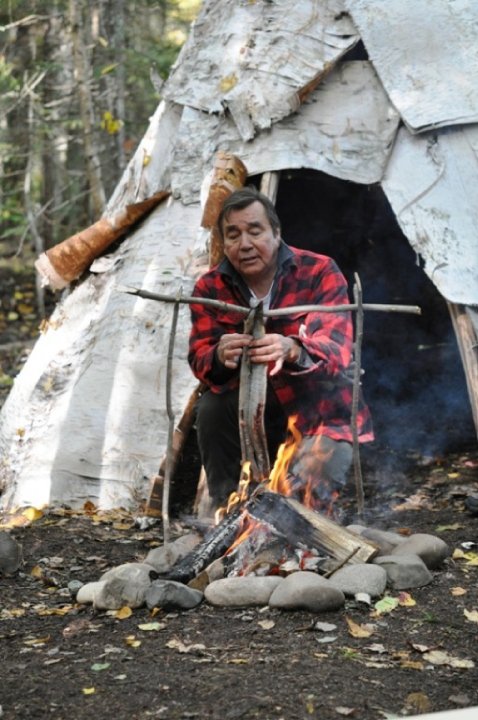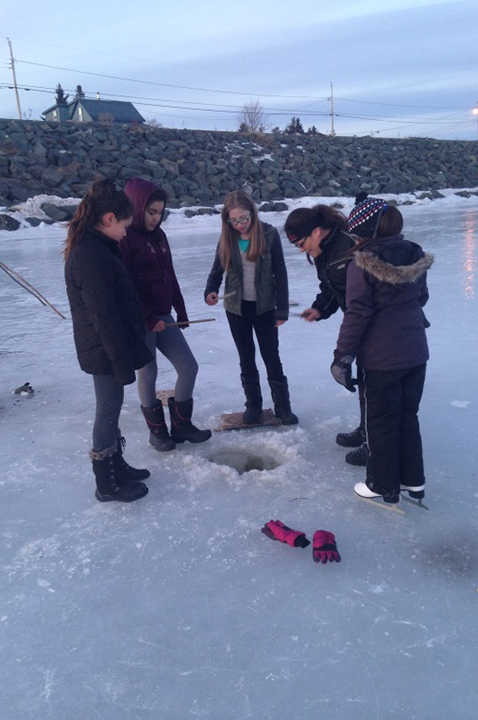Materials required: whiteboard, projector, journal or logbook
Drawing on the teacher introduction, start a discussion about: What is Kmimajuagnminal or Psonakutomuwakon?
It explains Mi’kmaw, Wolastoqey and Passamoquody ways of life, tying together social and economic practices with systems of governance through time.
List the following questions:
- How do you live your life and what do you think about it?
- How do you practice living and what customs and beliefs do you go by?
Have students consider what they eat, how they treat others, deal with garbage, etc.

holding large hook for gaffing salmon, ca 1906, New Brunswick Public Archives P590-33
Then view the Kate’kemk video, found online at: https://www.youtube.com/watch?v=Haw22f6P0ZY
OR
any of the Eeling videos at the Unama’ki Institute of Natural Resources: http://www.uinr.ca/?s=eels
OR
read the book Kataq: Journey of the Eels found at: http://www.uinr.ca/news-articles/kataq-journey-of-our-eels/
Discuss how the videos or the book reflect the core concepts and themes presented in the teacher notes. Have students write in their journals or logbook:
- Why is eeling important?
- Who does it?
- What tools are used? Can you buy these tools?
- Where do the eels come from?
- How big are they?
- What uses does the eel have?
- How does eeling help community life?
- Do young people still eat them?
Look at the pictures below: one is preparing eels to eat and the other is smelt fishing. If you haven’t eaten eels, have you tried eating smelts? Are they good for you?

–Metepenagiag (Metepna’kiaq) Heritage Park

-Jason Barnaby




